Focal length of the convex lens, f1 = 30 cm
Focal length of the concave lens, f2 = −20 cm
Distance between the two lenses, d = 8.0 cm
(a) When the parallel beam of light is incident on the convex lens first:
According to the lens formula, we have:

Where,
 = Object distance = ∞
= Object distance = ∞
v1 = Image distance
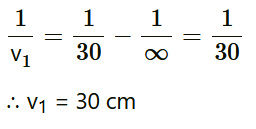
The image will act as a virtual object for the concave lens.
Applying lens formula to the concave lens, we have:

Where,
 = Object distance
= Object distance
= (30 − d) = 30 − 8 = 22 cm
 = Image distance
= Image distance
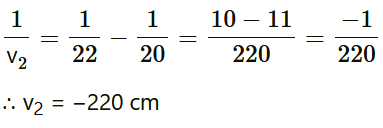
The parallel incident beam appears to diverge from a point that is from the centre of the combination of the two lenses.
from the centre of the combination of the two lenses.
(ii) When the parallel beam of light is incident, from the left, on the concave lens first:
According to the lens formula, we have:
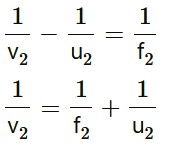
Where,
 = Object distance = −∞
= Object distance = −∞
 = Image distance
= Image distance
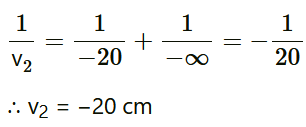
The image will act as a real object for the convex lens.
Applying lens formula to the convex lens, we have:

Where,
 = Object distance
= Object distance
= −(20 + d) = −(20 + 8) = −28 cm
 = Image distance
= Image distance

Hence, the parallel incident beam appear to diverge from a point that is (420 − 4) 416 cm from the left of the centre of the combination of the two lenses.
The answer does depend on the side of the combination at which the parallel beam of light is incident. The notion of effective focal length does not seem to be useful for this combination.
(b) Height of the image, h1 = 1.5 cm
Object distance from the side of the convex lens, 

According to the lens formula:

Where,
 = Image distance
= Image distance

Magnification, 

Hence, the magnification due to the convex lens is 3.
The image formed by the convex lens acts as an object for the concave lens.
According to the lens formula:

Where,
 = Object distance
= Object distance
= +(120 − 8) = 112 cm.
 = Image distance
= Image distance

Magnification, 

Hence, the magnification due to the concave lens is .
.
The magnification produced by the combination of the two lenses is calculated as:
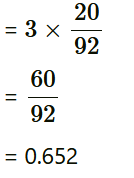
The magnification of the combination is given as:
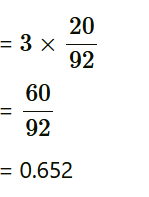
Where,
h1 = Object size = 1.5 cm
h2 = Size of the image
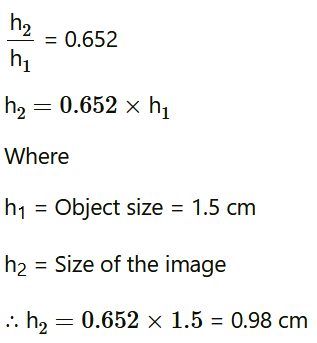
Hence, the height of the image is 0.98 cm.
= 40°
as:
be the new angle of minimum deviation for the same prism.











